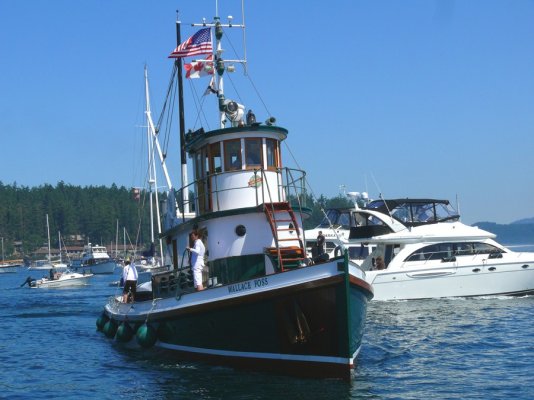Tonic
Senior Member
- Joined
- Aug 24, 2010
- Messages
- 184
- Vessel Name
- Tonic
- Vessel Make
- 1987 Cheer Men Marine PT42
I have been enjoying the single engine prop walk thread even though much doesn't apply to my twin engine boat. However, it reminded me of something I read that I have yet to try out. That is that some twin engine boats (no thruster), using a balance of rudder, shift and throttle, can be made to move sideways (only).
I keep meaning to try this but, as I keep ending up at the dock easily using normal methods, it always seems to get forgotten.* I think I understand the theory. Lets say you wanted to move the boat to port without any forward/reverse motion or yaw. With the starboard engine in forward and the port in reverse the stern would, of course, move to starboard. But with the helm to starboard the prop wash on the starboard rudder would be counteracting that movement...to some degree. With the right balance, it would seem that the whole boat could be forced to port. I'm sure it takes a particular combination of rudder and throttles to achieve this...if it's actually possible.
It's probably not the most necessary skill, more of a useful trick in flat calm conditions. I do see it being handy in the locks, mostly to neatly get some clearance from the wall before exiting, but that's really not the best place to practice.
So...can any of you twin owners make your boat do this?
-- Edited by Tonic on Monday 8th of November 2010 02:16:22 PM
I keep meaning to try this but, as I keep ending up at the dock easily using normal methods, it always seems to get forgotten.* I think I understand the theory. Lets say you wanted to move the boat to port without any forward/reverse motion or yaw. With the starboard engine in forward and the port in reverse the stern would, of course, move to starboard. But with the helm to starboard the prop wash on the starboard rudder would be counteracting that movement...to some degree. With the right balance, it would seem that the whole boat could be forced to port. I'm sure it takes a particular combination of rudder and throttles to achieve this...if it's actually possible.
It's probably not the most necessary skill, more of a useful trick in flat calm conditions. I do see it being handy in the locks, mostly to neatly get some clearance from the wall before exiting, but that's really not the best place to practice.
So...can any of you twin owners make your boat do this?
-- Edited by Tonic on Monday 8th of November 2010 02:16:22 PM


